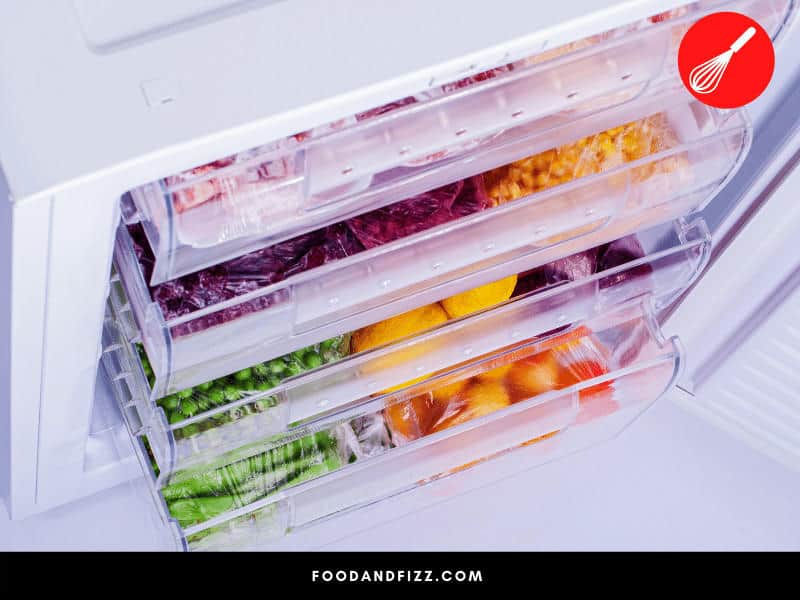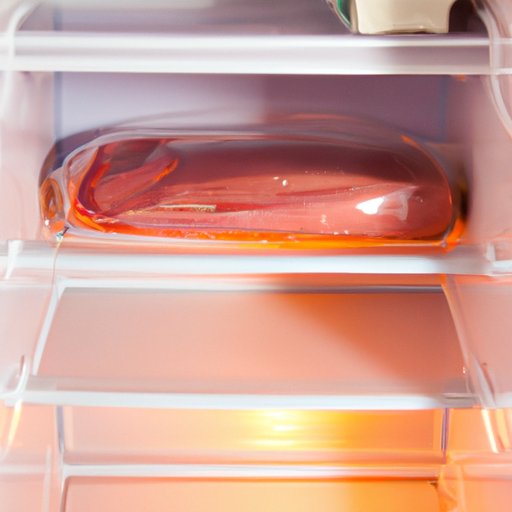Defrost Troubles: A Holiday Dilemma
The holidays are upon us, and with them comes the inevitable dilemma: how to defrost a ham. This culinary conundrum can send even the most seasoned chefs into a frenzy. But fear not, my fellow foodies, for this comprehensive guide will lead you through the thawing labyrinth and ensure that your ham is ready to grace your dinner table in all its succulent glory.

Image: foodandfizz.com
The Science of Defrosting
Before we embark on our defrosting journey, a brief lesson in the science of defrosting is in order. When frozen, water molecules form ice crystals within the meat. As we thaw the ham, these crystals gradually melt and recongeal, causing the meat to soften and thaw.
The Two Golden Defrosting Rules
-
Defrost Slowly: This may come as a surprise, but defrosting a ham quickly can lead to uneven thawing and unsafe consumption. By allowing the ham to defrost slowly in a refrigerator, we prevent any rapid bacterial growth and ensure that the meat is evenly thawed throughout.
-
Plan Ahead: Time is of the essence when it comes to defrosting a ham. A general rule of thumb is to allow 24 hours of thawing time for every 5 pounds of ham. So, for a 10-pound ham, you’re looking at approximately two days of refrigeration.
Let It Rest in the Fridge’s Embrace
Now, let’s get practical. Remove your frozen ham from its packaging and place it on a baking sheet or roasting pan. Cover it loosely with plastic wrap or aluminum foil to prevent it from drying out. Transfer the pan to the refrigerator and let the magic of slow and steady thawing begin.

Image: www.jyfs.org
Thawing vs. Tempering: A Subtle Distinction
While thawing is the primary objective, it’s worth noting the concept of “tempering.” Tempering involves bringing the thawed ham to room temperature for a period of time before cooking. This allows the meat to relax, become more pliable, and cook more evenly. For best results, temper your ham for about an hour at room temperature before roasting.
Food Safety: A Paramount Concern
It goes without saying that food safety is of utmost importance. While thawing in the refrigerator is the safest method, there are other precautions to consider:
- Do not thaw frozen ham on the counter, as this can lead to the growth of harmful bacteria.
- Once thawed, cook the ham immediately or refrigerate it for up to three days before cooking.
- Always check the ham’s internal temperature with a meat thermometer; it should reach 145 degrees Fahrenheit before serving.
A Ham-tastic Holiday Treat
To fully appreciate the tender, succulent flavor of your defrosted ham, consider roasting it according to the manufacturer’s instructions. You can glaze it with honey, maple syrup, or your favorite aromatic spices. Pair it with sides like potato gratin or roasted vegetables, and you’ve got a holiday feast fit for royalty.
How Long To Defrost A Ham In Refrigerator
Conclusion
Defrosting a ham in the refrigerator is an accessible and safe method that requires patience and planning. By following the guidelines outlined in this guide, you can triumph over the thawing challenges and savor a perfectly defrosted, mouthwatering ham this holiday season. Remember, the key to a tender and juicy ham lies in the gentle embrace of the refrigerator—let it work its slow and steady magic, and your festive table will be graced with a culinary masterpiece.







